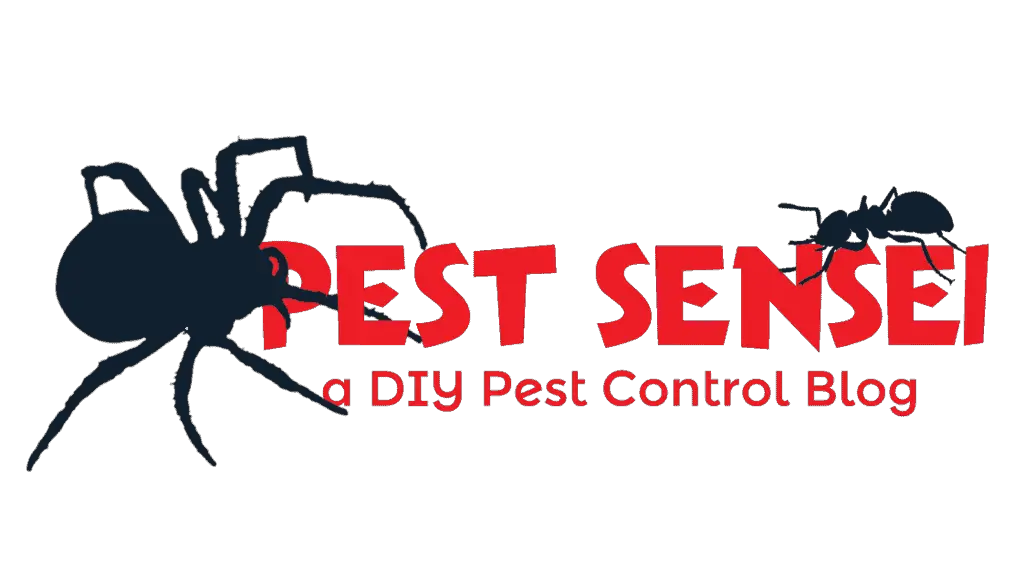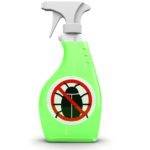When doing DIY pest control, you may have a dilemma choosing between synthetic and natural pesticides. Synthetic pesticides seem to have bad reputations for health and environment. Are they safe to use? I believe I have the answers.
Synthetic pesticides are safe to use for homeowners, as long as you follow the label instructions. Generally, pesticides used for baiting or localized treatment have lower risks, and wearing PPE further lowers the risk. However, misuse or abuse can make you sick, and harm the environment.
While synthetic pesticides are often portrayed as evil, they are much safer than you would have thought. Don’t shy away from them. Instead, learn how to manage them safely. It’s not difficult.
What are Pesticides?
Technically, pesticides are substances used to kill pests. The word “cide” has a Latin origin that means “kill”. In the modern world, pesticides are any substances used to kill, repel and control pests. The laws of different countries may define pesticides differently.
So, what are pests? Pests are creatures that cause annoyance and harm to humans and their livestock, crops, and property. They can be insects, arachnids, mammals, fish, plants, algae, fungi, and all other living creatures. Hence, pesticides can be further classified to insecticides, acaricides, fungicides, rodenticides, algicides, herbicides etc.
The status of a pest is fluid, depending on space, their density, and personal interpretation. For instance, flies are pests if they are found in our kitchen, but they aren’t pests in the wild; a lone flying midge is not a pest, but a swarm of midges certainly is; a spider is considered a pest for some people, while certain people would just ignore it.
Are Pesticides Bad?
Pesticides are not necessarily bad. They protect humans and our interests by controlling pests, and they are indispensable. However, pesticides cause serious issues to health and the environment when used indiscriminately. Overall, the benefits of pesticides outweigh the risks.
The fact that pesticides save lives and human property is unequivocal. In agriculture, it was estimated that pesticides saved 60 billion dollars worth of crops in 2002-2008. In healthcare, timely application of pesticides can reduce the transmission of deadly malaria by 90%. But still, there are voices that are against the uses of pesticides, which have their own merits.
The first recorded use of pesticides is around 2500 BC by the Sumerians. Our ancestors used natural substances containing sulfur, arsenic, mercury, etc., to kill pests.
Synthetic pesticides began to draw attention after the incidental discovery of DDT. The potency of DDT leads to the false belief that all sorts of insect pests and vector-borne diseases can be eradicated. As a direct result, DDT and other synthetic pesticides are abused everywhere.
It was until Rachel Carson published the book Silent Spring that raised awareness on the environmental impact of pesticides. Since then, everyone is more cautious on the use of pesticides. Pest management professionals started to preach integrated pest management where pesticides are no longer the only component in pest control. Manufacturers also began to focus on pesticides with lower environmental impact.
Thanks to the efforts from scientists, we now have safer synthetic pesticide formulations and active ingredients than before. Despite that, modern pesticides can still harm our health and the environment.
For instance, pyrethroids are highly toxic to fish and aquatic animals, while neonicotinoids are indicated to cause colony collapse disorder in bees. On the flip side, they are much safer for humans than other pesticides, such as malathion and carbaryl.
So, yeah. Pesticides are mostly harmful to humans and the environment. But not all pesticides are created the same. Some are more harmful than others. In any case, the negative impacts of pesticides can be mitigated through proper application. Take pyrethroids for example, using pyrethroids away from water sources can reduce the risks of killing aquatic lives.
Can Pesticides Make You Sick?
A key question often asked by homeowners is, whether the pesticide used is safe for them, their kids, and even their pets. This is often the key consideration when choosing a DIY pest control product.
In general, over-exposure to pesticides can make you sick. Some people, especially children and babies, are more sensitive than others to pesticides. Bear in mind that dosage matters. Localized applications and safer formulations can greatly reduce the risks.
Organophosphates such as malathion and carbamate such as carbaryl are relatively more harmful than other pesticides. These 2 groups of pesticides target the acetylcholinesterase in the insect nervous system. We share the same acetylcholinesterase with insects, making us equally susceptible. Fortunately, these 2 groups of pesticides are becoming less popular in urban pest control.
If you read the label of many synthetic pesticides, you will find some labeled with various warning signs, such as possible carcinogens or mutagens. Such information is usually based on the findings from lab experiments, where the test subjects are fed high dosage of pesticides. It is extremely unlikely that you will be exposed to such dosage, unless you deliberately do so.
Everything can be toxic if the concentration is high enough. We measure toxicity using LD50, the median lethal dose that can kill 50% of the population. LD50 is measured in mg/kg, which is the amount of toxicant per weight of the test subject. The lower the value, the more toxic it is.
Here’s a table of comparisons showing how toxic pesticides are relative to other non-pesticides, based on trials carried out in the lab using rats (data from EPA and Wikipedia). As you can see, coffee and salts can be more toxic compared to some pesticides. But, it is very unlikely that you will consume that many coffee and salts, and similarly it is very unlikely that you will be exposed to that much pesticides.
| Active Ingredients | Found in | LD50 (Oral) |
|---|---|---|
| Fipronil | Pesticide | 97 mg/kg |
| Caffeine | Coffee and tea | 192 mg/kg |
| Aspirin | Painkiller, anti-inflammatory drugs, fever medication | 200 mg/kg |
| Ketamine | Painkiller, antidepressant, anesthesia | 229 mg/kg |
| Carbaryl | Pesticide | 230-850 mg/kg |
| Imidacloprid | Pesticide | 380-500 mg/kg |
| Cyfluthrin | Pesticide | 500-800 mg/kg |
| Permethrin | Pesticide | 2280-3580 mg/kg |
| Sodium chloride | Salt | 3000 mg/kg |
| Malathion | Pesticide | 5400-5700 mg/kg |
| Ethanol | Alcohol | 7060 mg/kg |
Take Temprid FX for example. It contains 21% imidacloprid and 10.5% beta cyfluthrin. After a 474 times dilution (according to label rate), the resulting concentrations become 0.044% for imidacloprid, and 0.022% for beta cyfluthrin. A 4 L spray (which is more than enough to treat 1 house) would contain 1.76 mg of imidacloprid, way lower than its median lethal dose. And, don’t forget you need to multiply the LD50 value with your weight.
Having said that, do understand that LD50 is not for you to find out which pesticide is safe. It simply allows you to compare the toxicity of different pesticides measured in standard manner.
Aside from oral ingestion, you can be exposed to pesticides via inhalation and skin contact. Similar to oral ingestion, you need to be exposed to a lot of concentrated pesticides to get sick.
Even at a lower concentration, though, you may experience mild issues, such as skin and eye irritations, if exposed to pesticides directly.
You might wonder, if pesticides are safe, why would pest exterminators wear full protective equipment? Well, exterminators are handling pesticides consecutively for months or years. The exposure duration is much longer than we would normally experience. Moreover, they are dealing with concentrated pesticides, which are more dangerous than diluted ones. That’s why I recommend using ready-to-spray pesticides.
Application Methods Matter
Application methods can reduce the risk of exposure to pesticides. Localized and targeted treatments limit contamination and exposure of pesticides to non-target creatures.
One of the safest treatment methods is baiting. In baiting, toxicant is incorporated in a food matrix meant for target pests. Such baits do not attract non-target animals, and do not harm the environment.
Localized treatment involves treating specific locations with pest infestation, such as gaps, cracks and crevices. This is sometimes called spot treatment, and it also limits the chance of contamination and exposure to pesticides.
Space spraying, on the other hand, is a high risk treatment method. In this method, pesticide is sprayed in the air to kill flying insects. It can be inhaled by accident, or cause eye irritations. On top of that, it can drift to other places with air movement, and kills all sorts of insects indiscriminately.
Why should I use Synthetic Pesticides for DIY Pest Control?
In general, synthetic pesticides can provide longer lasting protection against pests. That reduces the need for frequent reapplication. On top of that, synthetic pesticides are generally fast-acting. Control can be achieved within a short time, if not instantly.
Pest control involves managing pest populations instead of individual pests. Insect pests exhibit different life stages, and each life stage has different behaviors. For instance, bed bugs lay eggs in cracks and crevices which can be out of reach. There’ll be eggs hatching daily, until the last egg hatched. If the pesticide has no residual effect, you have to repeat the treatment every day to kill newly hatched bed bugs.
Synthetic pesticides are formulated to eliminate the pests as fast as possible, or at least stop them from further causing harm immediately. Take any bait, for example, bait with low toxicant content will achieve the control slower, while high toxicant bait will not be effective to eliminate the ant colony. The manufacturers have to ensure their baits are fast acting, yet effective.
Lastly, synthetic pesticides are relatively safe, because it is more dangerous. Confused, right?
Because synthetic pesticides are dangerous, laws require a series of stringent tests to be done before they can be marketed. Hence, there will be reports on how safe or dangerous a product is. The products also bear clear instructions and warning signs, prompting users to exercise extra cautions. With natural pesticides, those parts are often lacking, which may result in misuse.
Safety Measures
Make sure you wear gloves when dealing with pesticides. Use chemical resistant gloves if you have those, or at least nitrile gloves.
During application or dilution, you will inevitably contact the pesticide through your hands. The pesticides can be absorbed into your body through skins. If you touch other things like door knobs, faucets and handrails, you contaminate them with pesticides. When someone else in your house touches the contaminated surfaces, they pick up the pesticides unknowingly.
Wearing gloves reduces the chances of exposure to pesticides and contamination. Always wash your hands with soap and water after handling pesticides. Hand sanitizers don’t remove the pesticides from your hand.
Other PPE (personal protection equipment), such as face masks, respirators and safety goggles, can also protect you from contacting the pesticides during your DIY treatments.
What are the Safer Synthetic Pesticides?
Overall, synthetic pesticides containing pyrethroids, juvenile hormone mimics, chitin synthesis inhibitors, phenylpyrazole and neonicotinoids are generally safe for humans and mammals because we don’t have the relevant target sites in our nerves. Organophosphates and carbamates are more dangerous.
You will need different pesticides for different situations and pests. Refer to my guide on the specific pests you are having trouble with, and you will see my recommended synthetic pesticides over there.
Are there Alternatives to Synthetic Pesticides?
Synthetic pesticide is not the only answer to pest control. If you are concerned about safety and the environment, you should focus on good sanitation and housekeeping practices, as well as proper proofing to prevent pest infestation (Read: 4 steps to keep your house pest-free).
If you are looking for an alternative to synthetic pesticides, you can always use natural pesticides. Things like essential oils based pesticides, pyrethrins and diatomaceous oils are good alternatives. However, there are some limitations with natural pesticides. Moreover, they are not as safe as you would have imagined.
Remember, pesticides can be part of the treatment approach, but it should be the last option, be it synthetic or natural pesticides.


